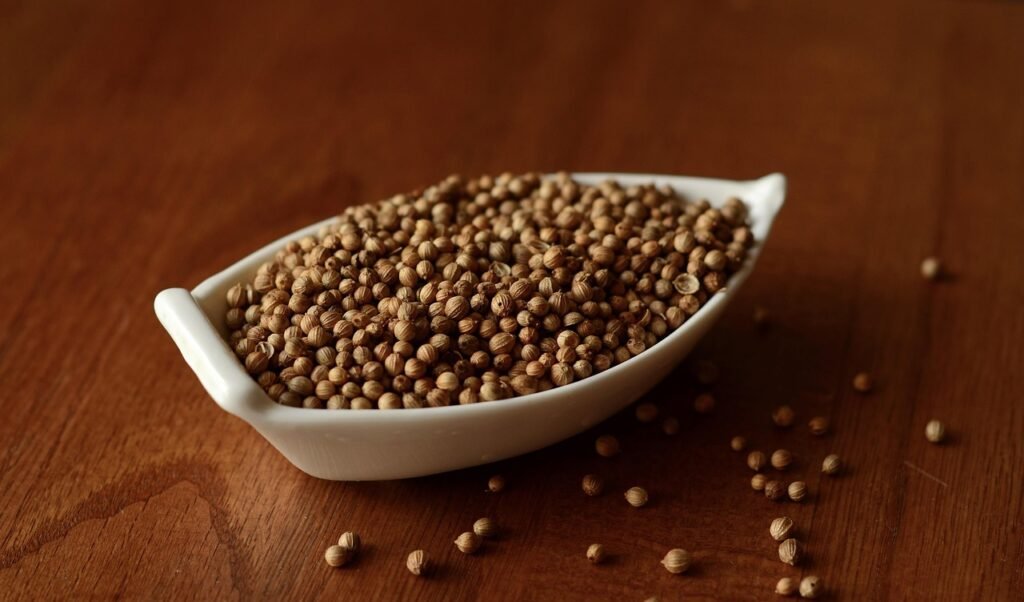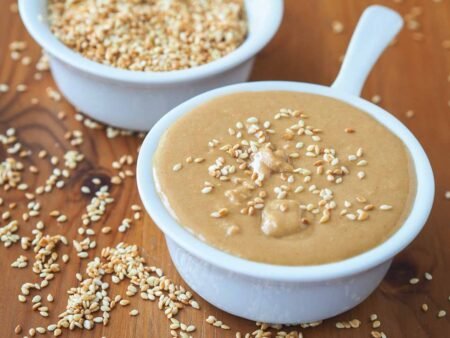Koriandri, more widely known as coriander or dhania, is a spice whose story echoes through temples, tombs, and kitchens across centuries and continents. Today, as chefs, nutritionists, and gardeners rediscover its value, koriandri stands at the crossroads of tradition and innovation. This in-depth article blends the rich insights from authoritative sources and modern analysis, comparing historical depth and global perspective from core articles and guiding your understanding of koriandri, its roots, benefits, uses, and modern revival.
What Is Koriandri?
Koriandri refers to the dried seeds of the plant Coriandrum sativum, a versatile herb with leaves known as cilantro or dhania. Harvested after flowering, the seeds exude a warm, citrusy aroma, a flavour cherished worldwide. But koriandri is more than just a spice: it is a symbol of ancient customs, medicinal wisdom, and culinary adventurousness.
- Botanical Profile: Member of the Apiaceae family, with feathery leaves and delicate umbels of white-pink flowers.
- Dual Identity: Leaves are cilantro, seeds are koriandri (coriander).
- Multiple Names: Dhania (India), Cilantro (U.S./Latin America), Coriandre (France), Kuzhbare (Arabic), Koriandri (historic/Ayurvedic/Eastern texts).
Ancient Roots: A Spice in Human History
Archaeological Legacy
Koriandri’s journey began thousands of years ago:
- Mediterranean Birthplace: Native to the Mediterranean and Southwest Asia, koriandri’s cultivation dates back to at least 5,000 BCE.
- Pharaohs and Royalty: Seeds found in King Tutankhamen’s tomb (Egypt) confirm its ceremonial and culinary role.
- Classical Era: Greeks and Romans valued koriandri for perfume, medicine, and bread flavour.
- Sacred and Medicinal: Its mention in ancient texts, Ayurvedic literature, and the Bible reveals koriandri’s dual spiritual and medicinal value.
Trade Routes and Cultural Spread
- Eastward Expansion: Appeared in Indian spice blends, Chinese kitchens (associated with longevity), Persian gardens, and Asian medicinal remedies.
- Westward Influence: Spanish conquistadors introduced koriandri to Latin America, integrating it into local cuisines like Mexican salsas and Costa Rican rice dishes.
- European Adaptation: Found in rye bread, pickling brines, ales, and liqueurs across Germany, Russia, Belgium, and France.
Agricultural Footprint and Ecological Significance
Koriandri is not just edible; it enriches the landscape:
- Pollinator Magnet: Delicate flowers attract bees and beneficial insects, boosting permaculture and sustainable gardens.
- Soil Health: Rotated with legumes or cereals, koriandri reduces pathogens and enriches the soil, supporting biodiversity and farming resilience.
- Climate Adaptation: Thrives in temperate/subtropical climates, with India as the major global producer (notably Rajasthan and Madhya Pradesh).
Culinary Uses: Tradition and Innovation
Koriandri’s place in the kitchen is global and transformational:
Classic Dishes
- Indian Cuisine: Central in garam masala, sambar powder, dhania-jeera blends, pickles, chutneys, and marinades. Both seeds and powder form the backbone of curries and stews.
- Middle Eastern Fare: Spice rubs, bread, and vegetable pickling.
- Latin American Dishes: Mexican salsas, Costa Rican gallo pinto, Peruvian sauces.
- European Baking: Rye bread, savoury pastries, and sausage flavouring in Germany, South Africa, and Russia.
Fresh Ideas
- Fusion Cooking: Modern chefs experiment with koriandri in teas, cocktails, desserts, and vegetarian broths.
- Alcoholic Drinks: Seeds flavour Belgian wheat beers, herbal liqueurs, and gin botanicals.
- Whole Plant: Roots intensify Asian soups and pastes, leaves garnish salads, soups, and rice dishes.
Simple Home Recipes
- Coriander-Flavoured Rice: White rice scented with coriander powder and bay leaf.
- Creamy Coriander Chicken: Mildly spiced chicken with coriander, cumin, cream, and fresh cilantro.
- Vegetable Stews: Zucchini, beans, potatoes, carrots, simmered in coriander broth.
- Chutneys and Pickles: Seed-infused dips and flavorful preserves.
Wellness and Medicinal Benefits
From Ayurveda to clinical nutrition, koriandri’s health value is profound:
Digestive Health
- Stimulates appetite, aids digestion, relieves bloating, gas, and indigestion.
- Used in tea infusions and water decoctions for gut comfort.
Metabolic Support
- Regulates blood sugar, supports diabetic wellness.
- It reduces bad cholesterol and aids heart health through sodium and cholesterol balance.
Immunity and Detoxification
- Rich in antioxidants (quercetin, terpinene, linalool, borneol), supports cellular health and inflammation reduction.
- Antimicrobial action helps fight infections and protect the gut.
Anti-inflammatory and Neuroprotective Effects
- Used against arthritis, nerve disorders, anxiety, and insomnia in traditional medicine.
- Emerging evidence for brain protection, especially in neurodegenerative conditions.
Skin, Bone, and Respiratory Health
- Antiarthritic, antirheumatic, and anti-inflammatory properties.
- Diuretic action, detoxifying support, and relief from respiratory ailments (cough, bronchitis).
- Essential vitamins (A, C, K, carotene, and iron) reinforce bone strength, immunity, and prevent osteoporosis.
Home Gardening: Sustainable and Rewarding
Koriandri is beloved by home gardeners for its versatility and ease:
- Cultivation: Sow seeds 12–14cm apart, 1.3cm deep, in moist, well-drained soil; germinates in 8–14 days; leaves ready in 3–4 weeks, seeds in 6–8 weeks.
- Climate: Prefers 17°C–27°C; tolerates partial sun.
- Care Tips: Mulch to cool soil, avoid overwatering, snip stems regularly for extended harvest.
- Ecological Value: Attracts pollinators, improves soil, and grows organically with minimal inputs.
Comparing Perspectives: Key Themes
| Feature | Classical/Historic Article | Scientific/Modern Article |
| Origins | Ancient tombs, Egypt, Bible, Ayurveda | Archaeological sites, Mediterranean |
| Medicinal Tradition | Ancient remedies, spiritual rituals, Ayurveda | Clinical evidence, antioxidants |
| Culinary Legacy | Historic uses in bread, beer, brines, curries | Modern fusion, teas, global flavors |
| Cultural Terms | Koriandri, dhania, cilantro | Botanical nomenclature |
| Modern Relevance | Urban gardening, eco-friendly, wellness trends | Scientific validation, supplements |
| Sustainability | Ecological footprint, soil health, pollinators | Crop rotation, climate adaptation |
FAQs About Koriandri
What is koriandri, and how is it different from coriander or cilantro?
Koriandri is a traditional, often regionally or culturally used term for coriander seeds (from Coriandrum sativum). Scientifically, there is no difference between koriandri and coriander; the plant’s leaves are called cilantro in the U.S./Latin America, dhania in India, and coriander elsewhere.
What are the main health benefits of consuming koriandri?
Koriandri supports digestion, regulates blood sugar, reduces cholesterol, fights infections, boosts immunity, and helps with inflammation, anxiety, and respiratory issues. It’s packed with antioxidants, vitamins, and minerals vital for holistic health.
How can I use koriandri in cooking?
Koriandri seeds (whole or ground) flavour curries, chutneys, pickles, breads, salsas, stews, sauces, and drinks. The leaves (cilantro) garnish soups, salads, and rice dishes. The roots add complexity to Asian dishes. Experiment with new recipes for teas, dips, and marinades.
Is koriandri easy to grow at home?
Yes. Sow seeds directly in containers or garden plots, keep soil moist, and ensure moderate sunlight. Leaves appear within a month, seeds are harvested in two months. It’s a great addition to kitchen gardens and eco-friendly landscaping.
Are there any side effects or allergies associated with koriandri?
Koriandri is generally safe in food quantities. Rare allergies may occur, especially in individuals sensitive to plants in the Apiaceae family. Excess consumption may lower blood sugar; diabetics and sensitive individuals should consult a healthcare provider.
How is koriandri used in traditional medicine?
Koriandri was and is prescribed for digestive discomfort, fever, skin inflammation, anxiety, insomnia, menstrual irregularity, heart health, and kidney support. Used as infusions, decoctions, or blended with other herbs in Ayurveda and ancient remedies.
Does koriandri differ from cilantro or dhania?
All refer to parts of the same plant: leaves are cilantro or dhania; seeds are koriandri or coriander. The term “koriandri” is used more in historic, Ayurvedic, Middle Eastern, and Asian contexts to denote the seeds and their broader tradition.
What are some sustainable benefits of growing koriandri?
Koriandri improves soil health, attracts pollinators, and is drought-tolerant. Its role in crop rotation and organic gardening makes it a favourite among permaculturists and sustainable gardeners.
Why Koriandri Matters Today
In a world seeking wellness, sustainability, and culinary adventure, koriandri bridges the wisdom of the ancients with the promise of modern health science. Its complex flavour and diverse benefits ensure that koriandri will always be more than “just another spice;, it’s an icon of history, health, and flavour.
Explore koriandri in your kitchen, your garden, and your wellness routine. Through its seeds, leaves, and roots, koriandri gives us a taste of the past, a tool for present health, and a vision for a sustainable future.









